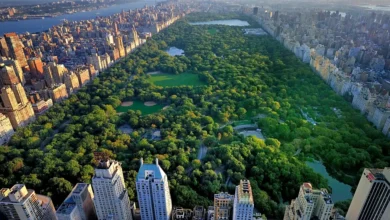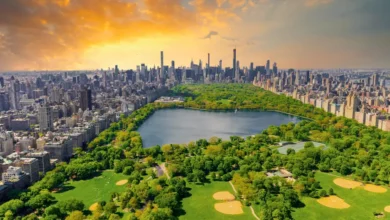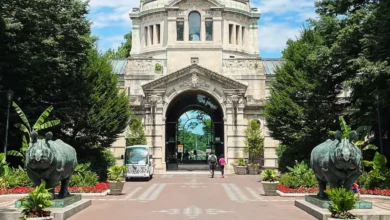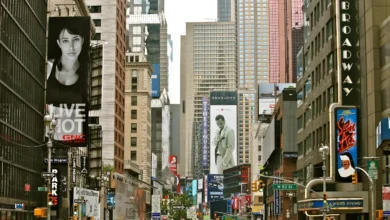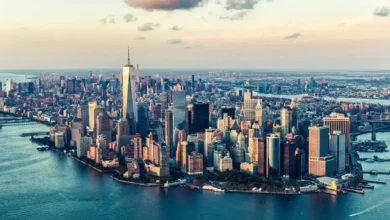Urban Oasis of Innovation and Nature
The High Line in New York City is more than just a park; it is a symbol of urban renewal and innovation. Transforming an abandoned elevated railway into a green space, the High Line has become one of the most beloved attractions in the city, drawing millions of visitors each year. This blog will take you on a journey through the history, design, attractions, community impact, and future prospects of the High Line, highlighting why this unique park is a must-visit destination.
History of the High Line
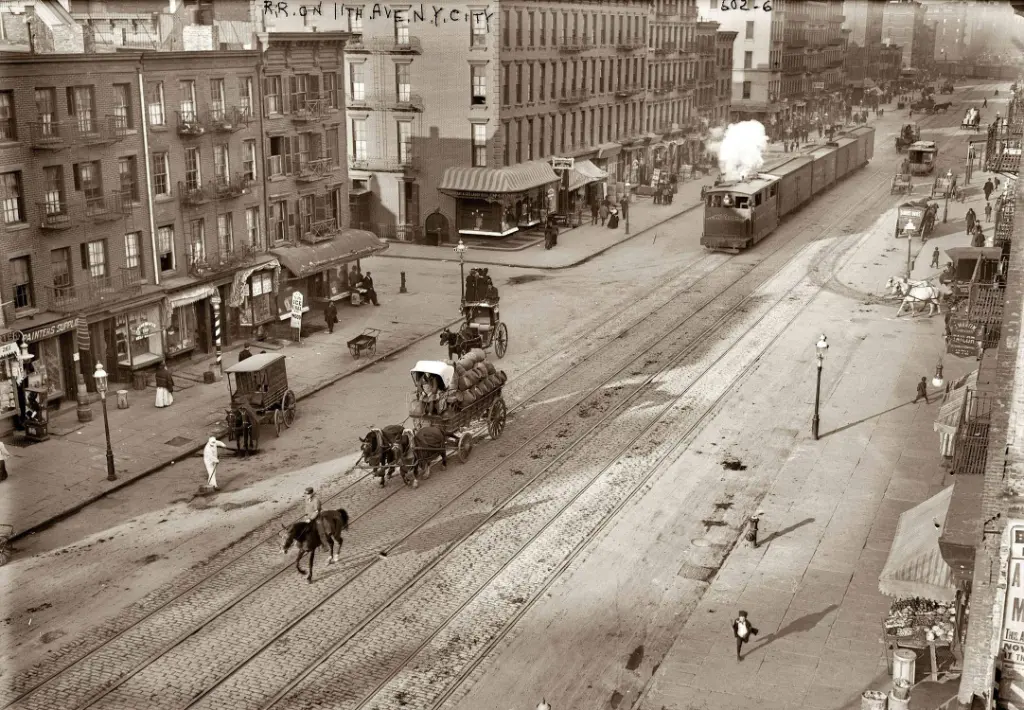
The High Line's history dates back to the early 20th century. Initially constructed in the 1930s as part of the West Side Improvement Project, the elevated railway was designed to remove dangerous freight trains from Manhattan's streets. Running from 34th Street to St. John's Park Terminal at Spring Street, the railway played a crucial role in the city's industrial operations for several decades.
By the 1980s, however, the rise of interstate trucking rendered the railway obsolete, leading to its abandonment. Nature began to reclaim the tracks, with wild plants growing amidst the steel rails. In the late 1990s, as the structure faced demolition, community activists Joshua David and Robert Hammond founded Friends of the High Line to advocate for its preservation and transformation into a public park.
Their vision gained traction, and with the support of the city, private donors, and the public, the first section of the High Line opened in 2009. The project has since expanded, with the final section completed in 2014, creating a continuous 1.45-mile greenway that stretches from Gansevoort Street in the Meatpacking District to 34th Street in Hudson Yards.
Design and Architecture

The design of the High Line is a testament to innovative urban planning and landscape architecture. James Corner Field Operations, Diller Scofidio + Renfro, and planting designer Piet Oudolf spearheaded the project, creating a space that blends industrial heritage with natural beauty.
Key Design Elements:
- Integration of Original Rail Tracks: The designers preserved elements of the original railway, incorporating tracks into the park's pathways and planting beds. This homage to the High Line's history adds a unique character to the park.
- Naturalistic Planting: Inspired by the wild vegetation that colonized the abandoned tracks, Piet Oudolf's planting design emphasizes native species and resilient perennials. The result is a dynamic landscape that changes with the seasons.
- Sustainable Materials: The use of sustainable and reclaimed materials reflects a commitment to environmental responsibility. From benches made of reclaimed wood to permeable pathways, the High Line exemplifies eco-friendly design.
- Varied Landscapes: The park features a series of distinct landscapes, including woodland, grassland, and water features. This diversity offers visitors a rich sensory experience as they walk along the elevated path.
Key Attractions and Features
The High Line offers a variety of attractions and features that cater to diverse interests. Whether you're an art enthusiast, nature lover, or foodie, the High Line has something to offer.
Art Installations
Art is a central element of the High Line experience. The park features rotating installations by contemporary artists, curated by High Line Art. These works range from sculptures and murals to performance art, enriching the cultural fabric of the park.
- Notable Installations: Over the years, the High Line has hosted works by renowned artists such as El Anatsui, Sarah Sze, and Spencer Finch. These pieces often engage with the park's unique environment, creating thought-provoking interactions between art and nature.
Gardens and Greenery
The High Line's gardens are a horticultural delight. The planting design, overseen by Piet Oudolf, emphasizes texture, color, and seasonal variation. Visitors can enjoy a variety of plants, including wildflowers, grasses, and shrubs, all arranged to mimic the natural landscape that once grew on the abandoned tracks.
- Seasonal Highlights: Each season brings a new wave of beauty to the High Line. Spring bursts with colorful blooms, summer showcases lush greenery, autumn features rich foliage, and winter reveals the structural elegance of the garden's design.
Viewing Platforms
The High Line offers several viewing platforms that provide stunning vistas of the city and the Hudson River. These platforms are strategically placed to offer panoramic views, making them popular spots for photography and relaxation.
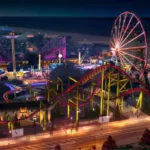 The Wonder Wheel Amusement Park: A Timeless Icon of Fun and Adventure
The Wonder Wheel Amusement Park: A Timeless Icon of Fun and Adventure
- 14th Street Passage: This covered section features seating and art installations, offering a sheltered place to enjoy the view.
- The Tenth Avenue Square: A stepped seating area that creates a natural amphitheater, perfect for people-watching and taking in the cityscape.
Food and Drink
The High Line features several food vendors that offer a range of culinary delights. From artisanal ice cream to gourmet sandwiches, there's something to satisfy every palate.
- Seasonal Food Carts: During the warmer months, visitors can enjoy treats from a variety of vendors, including local favorites like Ample Hills Creamery and People's Pops.
- Chelsea Market Passage: Located between 15th and 16th Streets, this section of the High Line offers food and drink options, as well as access to the famous Chelsea Market.
Events and Performances
The High Line hosts a wide array of events and performances throughout the year. These include music concerts, dance performances, fitness classes, and educational programs. The park's unique setting provides a distinctive backdrop for these activities, enhancing the overall experience.
- High Line Performances: Featuring a mix of local and international artists, these events celebrate diverse forms of artistic expression.
- Stargazing: In partnership with the Amateur Astronomers Association, the High Line offers stargazing sessions where visitors can observe the night sky through high-powered telescopes.
Community Impact and Engagement
The High Line has had a profound impact on the surrounding community, fostering social engagement and economic development. The transformation of the elevated railway into a public park has revitalized the West Side of Manhattan, attracting new businesses, residents, and tourists.
Economic Revitalization
The High Line has spurred significant economic growth in the neighborhoods it traverses, particularly the Meatpacking District, West Chelsea, and Hudson Yards. Property values have increased, and new developments have sprung up, including luxury apartments, hotels, and commercial spaces. This revitalization has generated thousands of jobs and boosted local businesses.
Social and Cultural Engagement
The High Line serves as a vibrant social space where people from diverse backgrounds can come together. The park's programming, which includes cultural events, educational workshops, and community festivals, fosters a sense of community and cultural exchange.
Inclusivity and Accessibility
Friends of the High Line, the non-profit organization that maintains the park, is committed to ensuring that the High Line remains accessible and welcoming to all. This includes providing free programs, improving physical accessibility, and engaging with local communities to ensure that the park meets their needs.
Sustainability and Environmental Impact
Sustainability is at the heart of the High Line's design and operations. The park serves as a model for sustainable urban development, demonstrating how green spaces can be integrated into densely populated cities.
Green Infrastructure
The High Line incorporates several green infrastructure features designed to manage stormwater, reduce urban heat island effects, and support biodiversity.
- Permeable Surfaces: The park's pathways are made from permeable materials that allow rainwater to filter through, reducing runoff and replenishing groundwater.
- Bioswales and Rain Gardens: These features capture and filter stormwater, providing natural irrigation for the plants and reducing the burden on the city's drainage system.
- Habitat Creation: The diverse plantings provide habitats for pollinators, birds, and other wildlife, contributing to urban biodiversity.
Resource Efficiency
The High Line employs resource-efficient practices to minimize its environmental footprint.
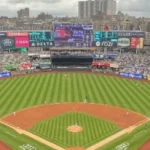 The Yankee Stadium: A Legacy of Baseball Excellence and American Culture
The Yankee Stadium: A Legacy of Baseball Excellence and American Culture
- Energy Conservation: The park uses energy-efficient lighting and solar panels to reduce energy consumption.
- Waste Reduction: Recycling and composting programs help minimize waste, and the park uses reclaimed materials in its construction and maintenance.
Future Prospects and Developments
As the High Line looks to the future, several exciting developments and initiatives are on the horizon.
Expansion Projects
Plans are underway to extend the High Line, connecting it to other green spaces and cultural institutions. One such project is the High Line Plinth, a new space for monumental art installations, which will further enhance the park's cultural offerings.
Enhanced Accessibility
Efforts are being made to improve accessibility, ensuring that the High Line can be enjoyed by all. This includes the installation of more elevators and ramps, as well as the development of programs aimed at engaging underrepresented communities.
Climate Resilience
In response to the growing threat of climate change, the High Line is exploring ways to enhance its resilience. This includes planting more drought-tolerant species, improving stormwater management, and implementing measures to protect against extreme weather events.
Visitor Information and Tips
Hours of Operation
The High Line is open daily, with varying hours depending on the season. Generally, the park opens at 7:00 AM and closes at 7:00 PM in winter, and at 10:00 PM in summer. It's advisable to check the High Line's official website for the most current information.
Admission and Tickets
Admission to the High Line is free, though some special events and programs may require tickets or reservations.
Getting There
The High Line
can be accessed from multiple points along its length, with entrances at Gansevoort Street, 14th Street, 16th Street, 20th Street, 23rd Street, 26th Street, 28th Street, 30th Street, and 34th Street. It is easily reachable by subway, bus, and bike.
Accessibility
The High Line is designed to be accessible to all visitors. Elevators and ramps are available at key access points, and the park features wide pathways suitable for wheelchairs and strollers.
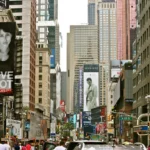 Broadway: The Heartbeat of American Theater
Broadway: The Heartbeat of American Theater
Dining and Shopping
Visitors can enjoy a variety of food options along the High Line, from seasonal vendors to nearby restaurants in Chelsea Market and the Meatpacking District. The park also has a shop where visitors can purchase souvenirs, books, and gifts.
Tips for Visiting
- Visit Early or Late: To avoid crowds, consider visiting early in the morning or later in the evening.
- Wear Comfortable Shoes: The High Line is a linear park, and you'll be walking a lot. Comfortable shoes are a must.
- Stay Hydrated: Bring a water bottle, especially during the warmer months.
- Take Your Time: The High Line is meant to be enjoyed at a leisurely pace. Take your time to explore, relax, and take in the views.
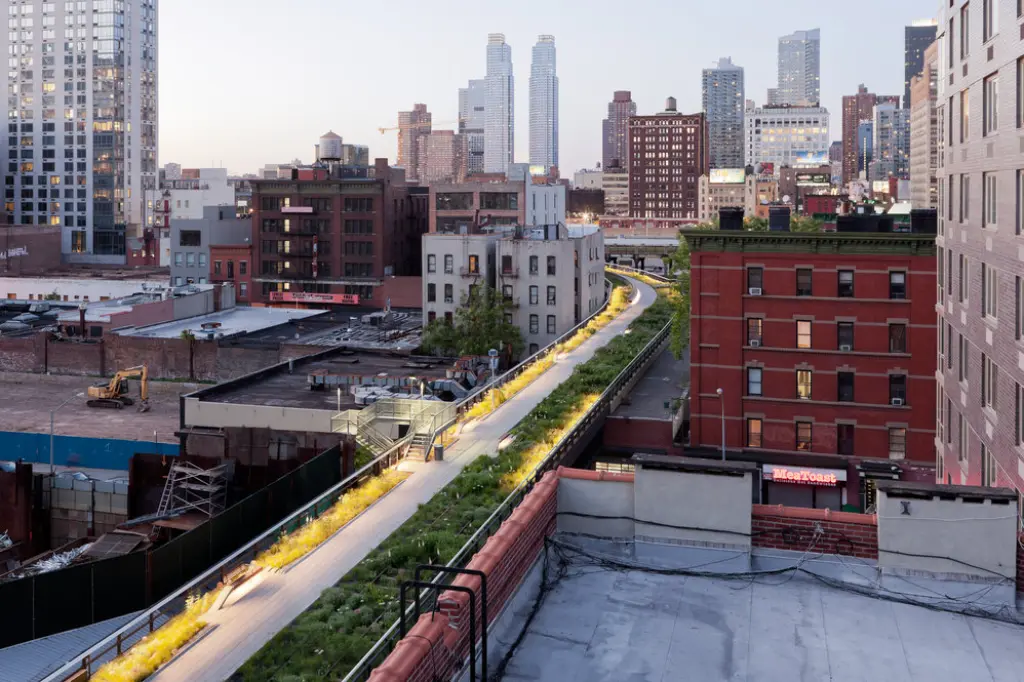
The New York High Line is a shining example of urban innovation, transforming an abandoned piece of infrastructure into a thriving public space that benefits both people and the environment. Its blend of history, design, art, and nature offers a unique experience that resonates with locals and visitors alike. As it continues to evolve, the High Line will undoubtedly remain a symbol of the transformative power of urban green spaces, inspiring cities around the world to reimagine their own neglected spaces. Whether you're a New Yorker or a tourist, a visit to the High Line is a journey through the past, present, and future of urban design and community engagement.
